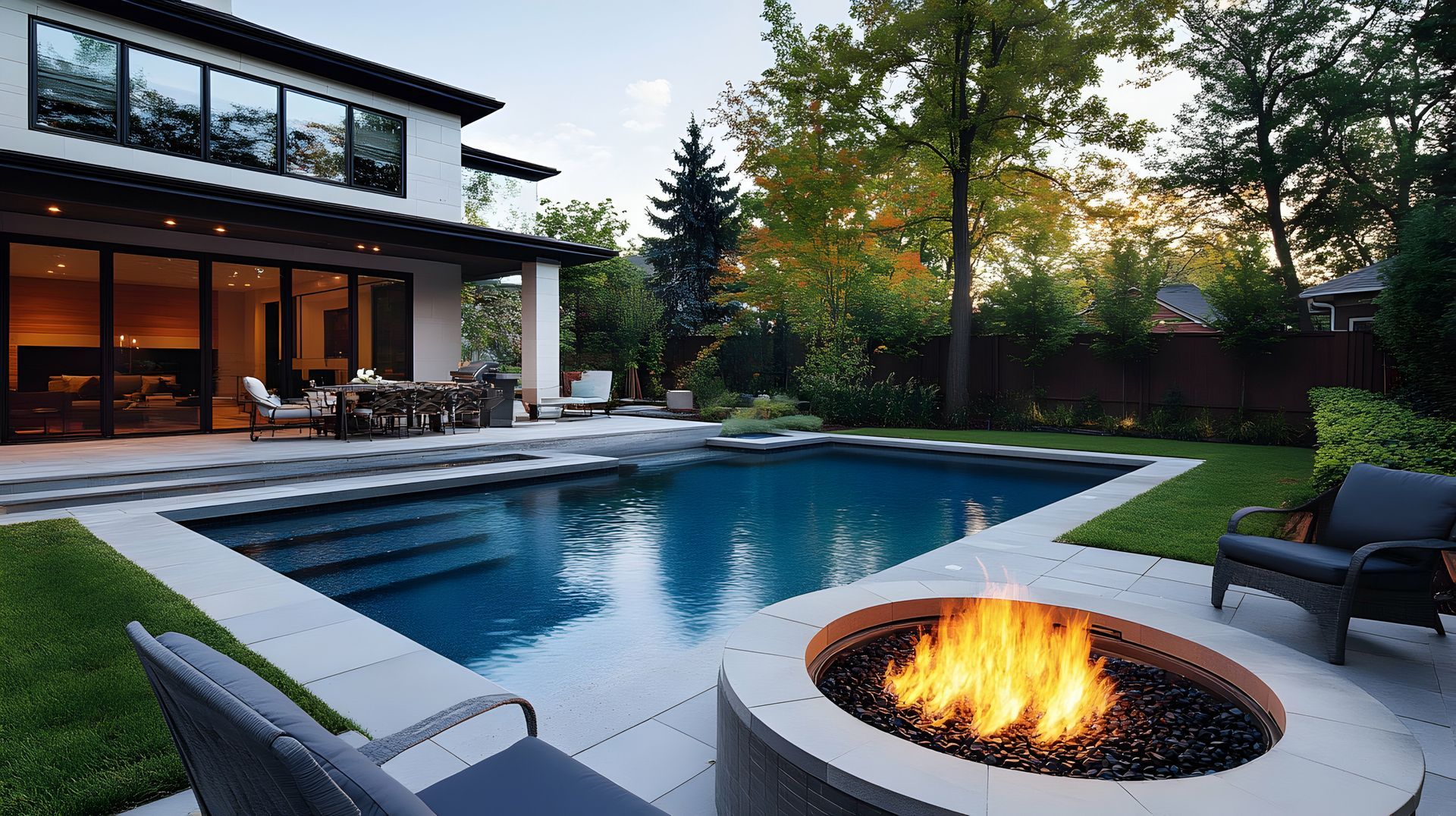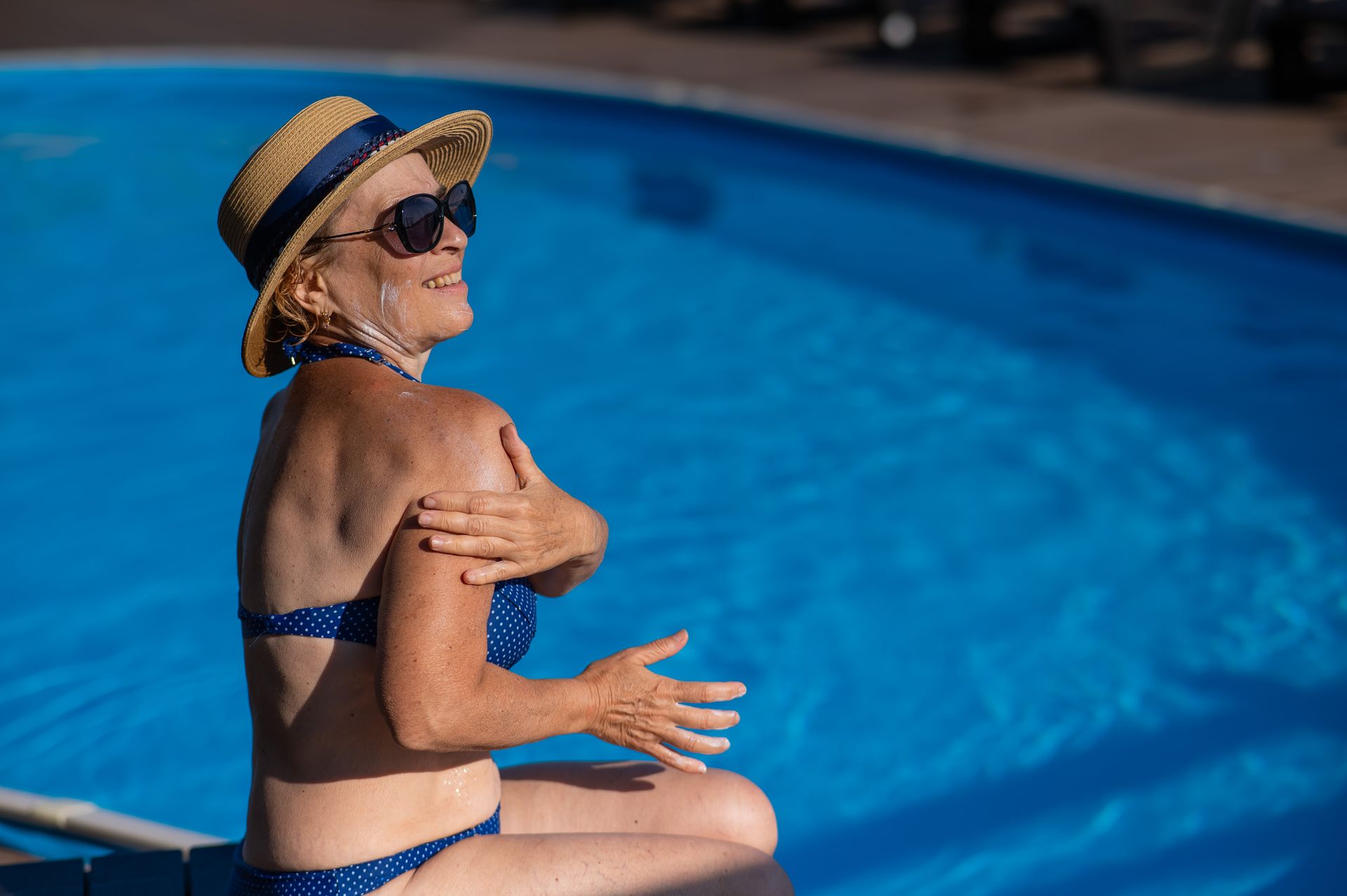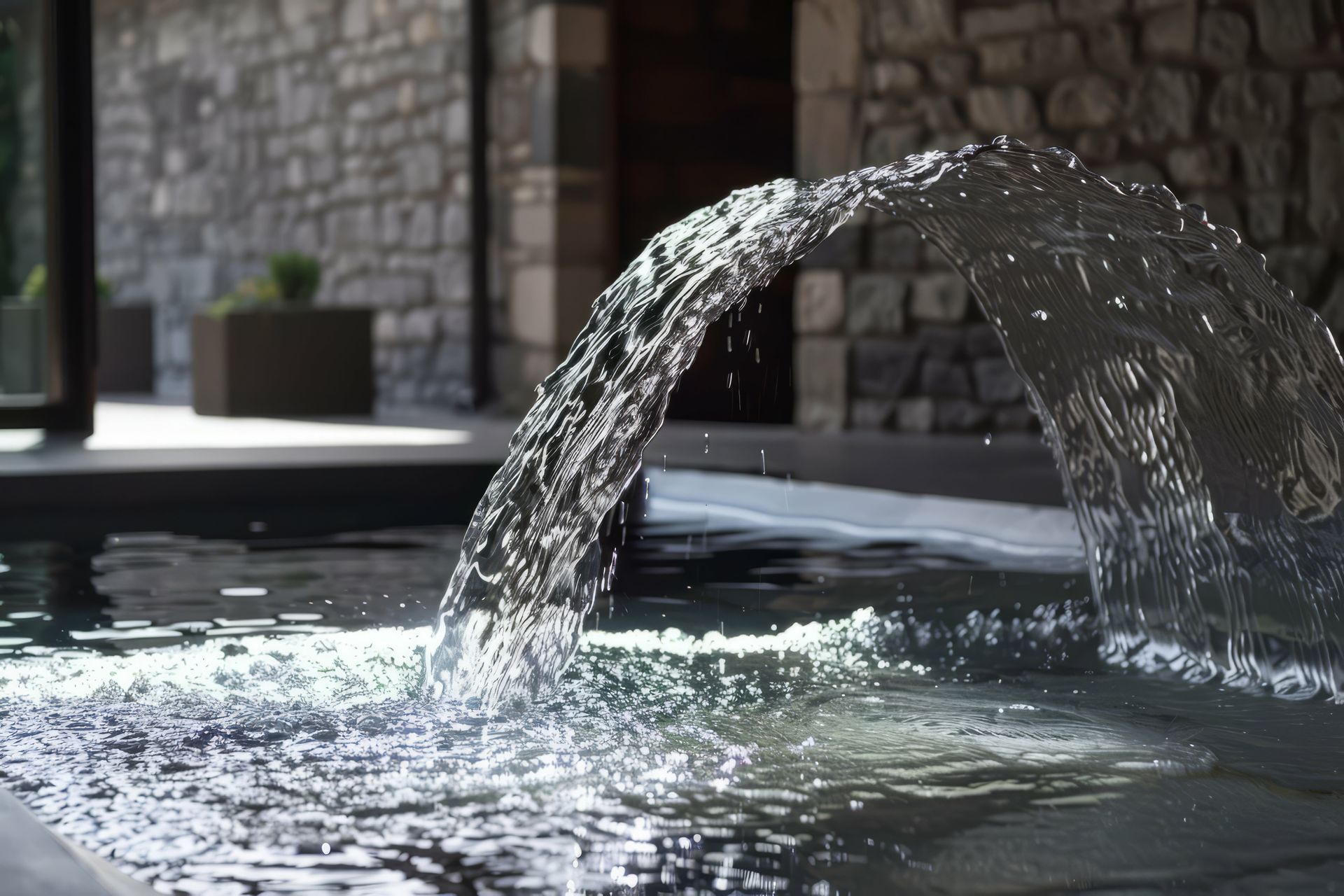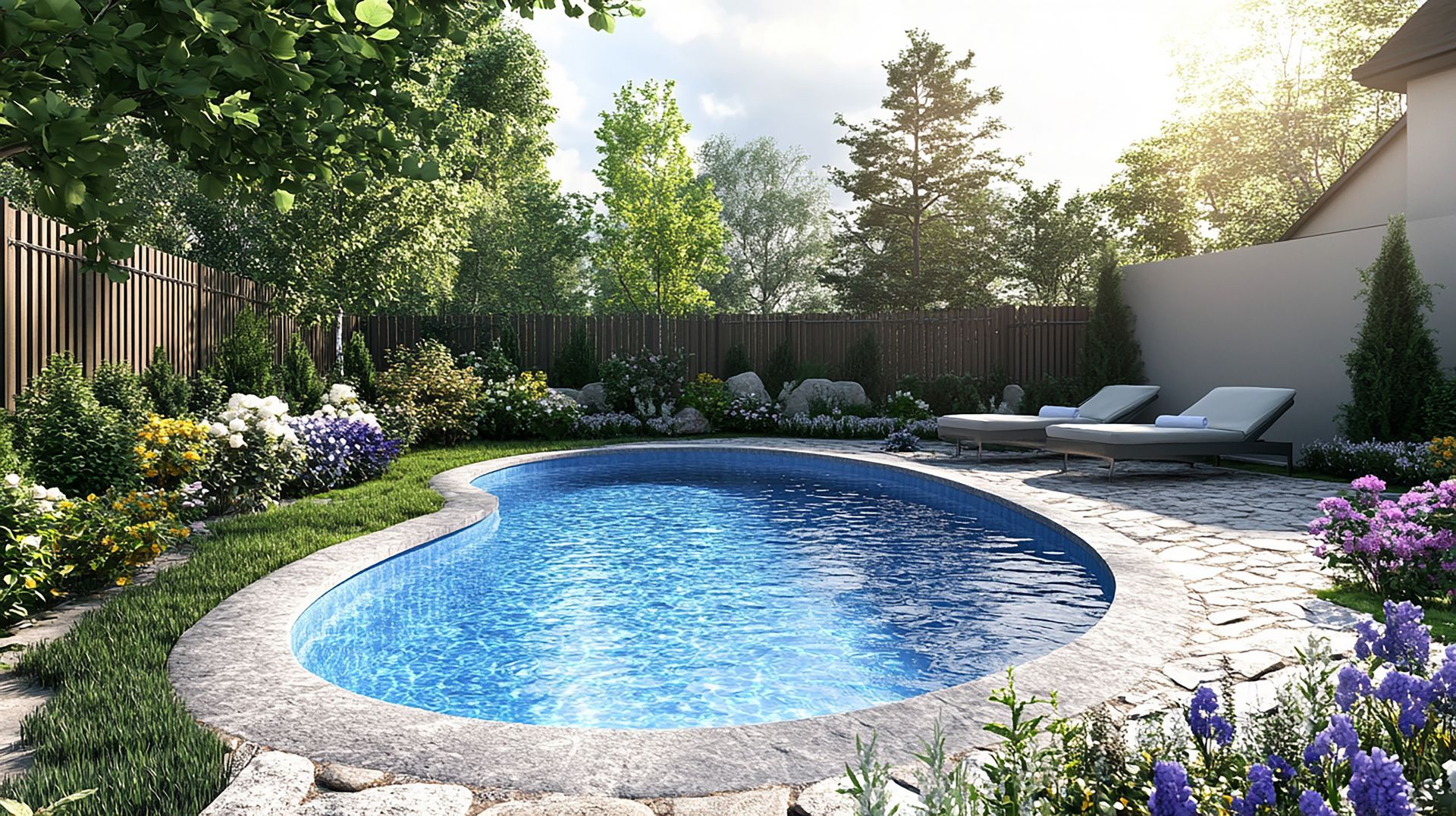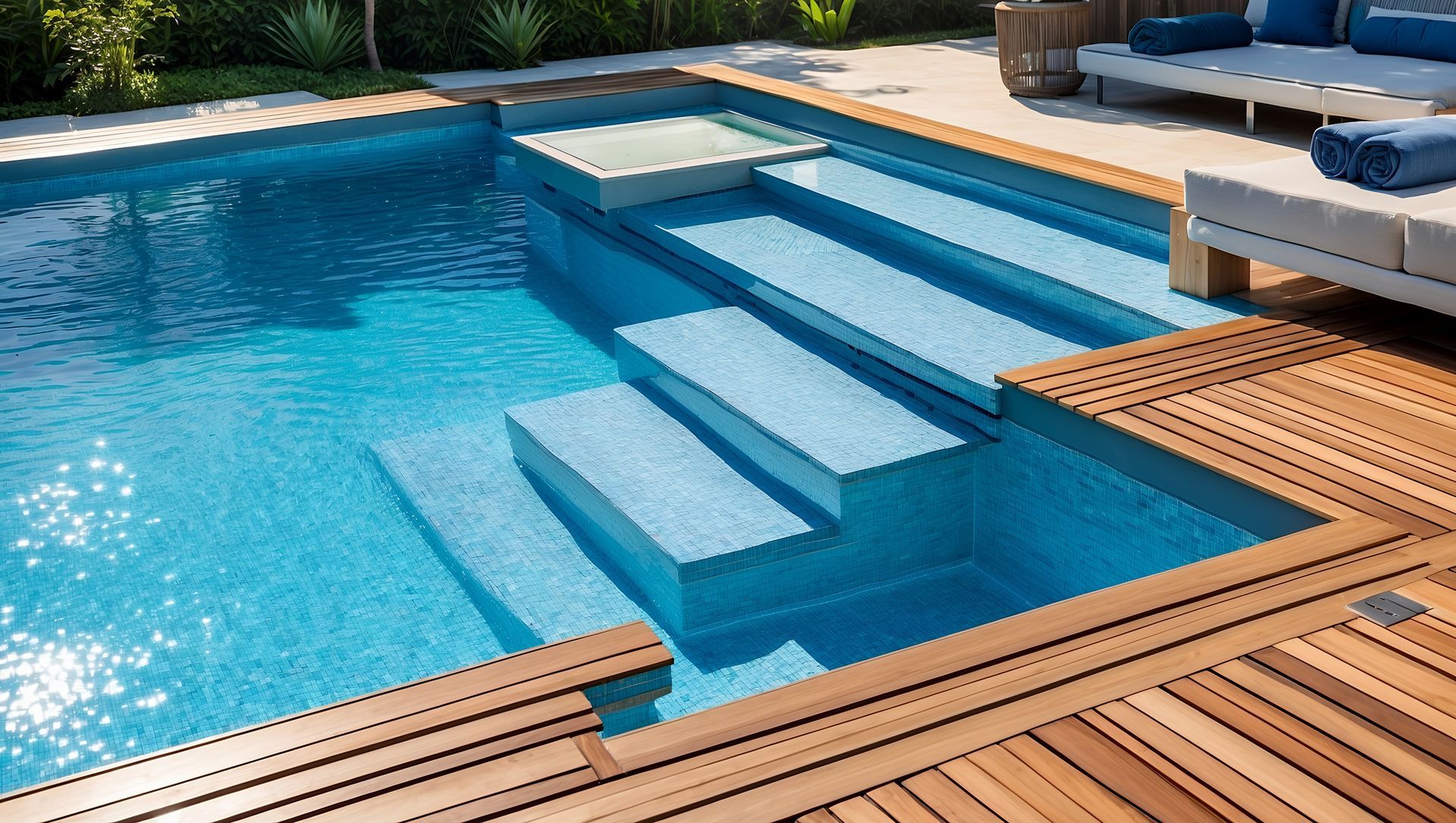Pool Safety Features Every Tennessee Family Should Consider
Pool safety isn't something we like to think about when we're dreaming of lazy summer afternoons and pool parties. But as pool builders who've worked with hundreds of Middle Tennessee families, we know that the best pools are those where parents can relax and truly enjoy their backyard investment. The key is building safety into your pool design from the beginning, so protection becomes automatic rather than something you have to constantly worry about. Let me walk you through the safety features that give Tennessee families real peace of mind.
Understanding Tennessee Pool Safety Requirements
What the Law Requires
Tennessee has specific requirements for residential pool safety, and these aren't suggestions – they're legal requirements that must be met before your pool can pass final inspection.
Barrier requirements: All pools must be enclosed by a barrier at least 4 feet high with no openings larger than 4 inches. This barrier must completely surround the pool area.
Gate specifications: Gates must be self-closing and self-latching, with latches at least 54 inches above ground. Gates must open away from the pool area.
House wall exceptions: If your house forms part of the barrier, any doors leading to the pool area must have alarms or be equipped with self-closing, self-latching devices.
Local Variations
While Tennessee sets state minimums, some local jurisdictions have additional requirements:
Murfreesboro specifics: The city follows state guidelines but has specific inspection procedures and timing requirements.
HOA requirements: Many neighborhoods have additional safety requirements beyond state law, particularly regarding fence appearance and gate types.
Insurance considerations: Your insurance company may require specific safety features for coverage, sometimes exceeding legal minimums.
Essential Safety Features for Every Pool
Proper Fencing and Barriers
The most important safety feature is a proper barrier system that prevents unsupervised access to your pool area.
Fence height and design: Four feet is the legal minimum, but many families choose 5-6 foot fencing for added security and privacy. The fence should have no footholds or handholds that children could use to climb over.
Gate hardware: Self-closing, self-latching gates are required, but the quality of hardware varies significantly. Invest in commercial-grade hardware that will work reliably for years.
Fence materials: Options include aluminum (low maintenance, attractive), vinyl (private, customizable), and wood (natural look, requires maintenance). Each has safety and aesthetic considerations.
Pool Alarms and Detection Systems
Technology can provide an extra layer of protection by alerting you to unexpected pool activity.
Surface wave alarms: These detect disturbances on the water surface that might indicate someone has entered the pool. They're required in some situations and recommended for all pools.
Perimeter alarms: Infrared or laser systems that detect movement around the pool area. These can be particularly useful for larger properties where the pool isn't visible from the house.
Door and window alarms: Required when house doors provide direct access to pool areas. These alert you when doors or windows to the pool area are opened.
Wearable alarms: Personal devices that sound if they become submerged. These are particularly useful for families with young children or non-swimmers.
Pool Covers for Safety
Safety covers serve dual purposes – they keep debris out of your pool and provide a barrier to prevent accidental entry.
Automatic safety covers: These are the gold standard for pool safety. At the touch of a button, they deploy a cover strong enough to support significant weight while keeping the pool secure.
Manual safety covers: Less expensive than automatic versions but require more effort to use. They must be properly installed and secured to be effective.
Winter covers: While primarily for seasonal closure, quality winter covers also provide safety benefits during the months when pools aren't in use.
Advanced Safety Technology
Today's technology makes it easier than ever to keep an eye on your pool, even when you're not at home. These systems give you peace of mind and can be real lifesavers.
Camera systems: Pool cameras are designed specifically for outdoor use and can send alerts straight to your phone if they detect unexpected activity in or around your pool. You'll know immediately if someone enters the pool area.
Smart sensors: These clever devices can tell the difference between a leaf blowing across your pool and an actual person or pet falling in. This means you get alerts when it really matters, without being bothered by false alarms every time the wind picks up.
Integration with home systems: Many of these safety features can work together with your existing home security system, creating a comprehensive safety net that covers your entire property.
Water Quality Monitoring: Keeping your pool water properly balanced isn't just about comfort—it's about safety too. Poor water quality can lead to health issues and make swimming unsafe.
Chemical monitoring: These systems keep track of your chlorine levels, pH balance, and other important chemicals, letting you know right away if something's off. Clean, properly balanced water is essential for safe swimming.
Automatic dosing: Some systems can actually adjust your pool's chemical levels automatically, so you don't have to worry about constantly testing and adding chemicals yourself.
Remote monitoring: With smartphone apps, you can check on your pool's water quality from anywhere—whether you're at work or on vacation—and get alerts if your pool needs attention.
Safety Features for Different Family Situations
Families with Young Children
If you have children under 10, certain safety features become even more critical.
Pool fencing: Consider 5-6 foot fencing rather than the 4-foot minimum, and ensure there are absolutely no climbing aids near the fence.
Additional alarms: Multiple types of alarms provide redundant protection. Consider both pool alarms and wearable devices.
Shallow area safety: If your pool has shallow areas or tanning ledges, ensure these are clearly marked and consider additional barriers for very young children.
Safety equipment storage: Easily accessible life rings, reaching poles, and emergency equipment should be permanently installed near your pool.
Multi-Generational Families
Pools used by grandparents or elderly family members require different safety considerations.
Handrails and grab bars: Strategically placed hand hails make pool entry and exit safer for older swimmers.
Non-slip surfaces: Textured decking and pool steps help prevent slips and falls, which are more dangerous for older adults.
Good lighting: Adequate lighting around the pool area prevents trips and falls during evening use.
Emergency communication: Pool phones or intercoms can be lifesavers if someone needs help while swimming alone.
Families with Pets
Our furry family members need special protection around pools because unlike humans, most pets can't easily get themselves out if they accidentally fall in.
Pet barriers: You might need extra fencing or special barriers designed with pets in mind. Dogs are surprisingly good climbers and jumpers, so what works for children might not be enough to keep your pets safe.
Pet ramps: If you enjoy having your pets around the pool area, make sure they have a way to get out safely if they do end up in the water. Pet-friendly ramps or steps can be lifesavers—literally—giving your dog or cat a way to climb out on their own.
Pool covers: A good pool cover does double duty when you have pets. It keeps them from accidentally falling in when you're not around to supervise, and it also prevents them from drinking chemically treated pool water, which can make them sick.
Safety Equipment and Emergency Preparedness
Required Safety Equipment
Tennessee requires specific safety equipment to be available at all residential pools.
Life ring: A U.S. Coast Guard approved life ring with attached rope must be accessible at all times.
Reaching pole: A lightweight pole at least 8 feet long for reaching swimmers in distress.
Emergency information: Posted emergency contact numbers and CPR instructions in a weather-resistant format.
Recommended Additional Equipment
Beyond legal requirements, consider these additional safety items:
First aid kit: A waterproof first aid kit specifically designed for pool areas.
Emergency phone: A dedicated phone near the pool area for emergency calls.
Rescue equipment: Additional flotation devices and rescue equipment appropriate for your pool size and typical number of users.
Safety signage: Clear rules posted for pool use, diving restrictions, and emergency procedures.
Training and Education
Even the best safety equipment can't replace knowledge and preparation. Making sure everyone in your family knows how to stay safe around water is just as important as any fence or alarm system.
Swimming lessons: Every family member should know how to swim well enough to handle your specific pool. What works in a shallow kiddie pool might not be enough for a deep end, so make sure everyone's skills match your pool's depth and layout.
CPR training: This is one of those things you hope you'll never need, but you'll be incredibly grateful to have if an emergency happens. At least one person in your household should know CPR and basic water rescue techniques—it could make all the difference in those crucial first minutes.
Emergency procedures: When panic sets in, people forget even simple things. Make sure everyone knows exactly how to call for help and what to do in an emergency. Practice these procedures so they become second nature.
Pool rules: Set clear, non-negotiable rules about pool use and make sure everyone follows them consistently. Rules like "no swimming alone" or "adults only in the deep end" aren't just suggestions—they're safety requirements that everyone needs to respect.
Integrating Safety with Pool Design
Safety-First Design Principles
The best safety features are those integrated into your pool design rather than added as afterthoughts.
Sight lines: Design your pool area so it's visible from inside your house, particularly from kitchen and family room windows.
Lighting design: Plan lighting that illuminates all areas of your pool and deck without creating dangerous shadows or glare.
Traffic flow: Design pathways and deck areas to minimize running and slipping hazards.
Emergency access: Ensure emergency vehicles can access your pool area if needed.
Combining Safety with Aesthetics
Safety doesn't have to compromise the beauty of your pool area.
Attractive fencing: Modern pool fencing can be beautiful as well as functional, with options that complement your home's architecture.
Integrated lighting: Safety lighting can also provide ambiance for evening entertaining.
Hidden technology: Many modern safety systems can be hidden or integrated into your pool design so they don't detract from aesthetics.
Landscaping considerations: Use landscaping to enhance safety by providing clear sight lines and eliminating hiding places around your pool.
Tennessee-Specific Safety Considerations
Weather-Related Safety
Tennessee's climate presents specific safety challenges that should be addressed in your pool design.
Storm drainage: Proper drainage prevents standing water that could create slip hazards during Tennessee's frequent storms.
Wind considerations: Pool covers and safety equipment must be designed to handle Tennessee's occasional high winds.
Ice safety: During rare ice events, ensure pool areas remain safe and that safety equipment remains accessible.
Wildlife Considerations
Middle Tennessee's wildlife can present unexpected safety challenges around pools.
Animal barriers: Fencing and covers that prevent small animals from falling into pools and becoming drowning hazards.
Insect control: Design features that minimize standing water where mosquitoes might breed.
Snake awareness: While rare, ensure your pool area design doesn't create attractive hiding places for snakes.
Maintenance and Long-Term Safety
Keeping Safety Features Functional
Safety equipment only works if it's properly maintained and functional when needed.
Regular testing: Pool alarms, gate latches, and covers should be tested regularly to ensure they're working properly.
Battery maintenance: Replace batteries in pool alarms and other electronic safety devices on a regular schedule.
Hardware inspection: Gate hardware, fence integrity, and safety equipment should be inspected regularly for wear or damage.
Seasonal preparation: Ensure safety features are properly maintained through seasonal changes and weather extremes.
Updating Safety Features
Safety technology continues to improve, and older systems may need updates or replacement.
Technology upgrades: Consider updating older alarm systems with newer, more reliable technology.
Code changes: Stay aware of changes in safety codes that might affect your pool area.
Growing family needs: Safety requirements may change as children grow or family situations change.
Working with Professionals
Installation Requirements
Many safety features require professional installation to ensure they meet code requirements and function properly.
Electrical work: Pool alarms, lighting, and automated systems require licensed electrical work.
Fence installation: Proper fence installation ensures barriers meet code requirements and will stand up to Tennessee weather.
Equipment integration: Professional installation ensures safety equipment integrates properly with your pool systems.
Ongoing Professional Support
Consider professional maintenance for critical safety systems.
Annual inspections: Professional inspection of safety systems ensures they're functioning properly and meeting current codes.
System updates: Professionals can recommend and install updates to improve safety as technology advances.
Emergency preparedness: Professional guidance on emergency procedures and equipment use.
Cost Considerations for Pool Safety
Required vs. Optional Features
Understanding which safety features are required helps you budget appropriately while considering additional optional safety upgrades.
Budget priorities: Focus first on meeting all legal requirements, then consider additional safety features based on your family's specific needs.
Long-term value: Quality safety features often add to property value while providing peace of mind.
Insurance benefits: Some safety features may qualify for insurance discounts that help offset installation costs.
Budgeting for Safety
Plan safety costs into your overall pool budget rather than treating them as add-ons.
Initial installation: Include all required safety features in your initial pool installation for better pricing and integration.
Future upgrades: Budget for potential safety upgrades as your family needs change or technology improves.
Maintenance costs: Factor ongoing maintenance and testing costs into your long-term pool ownership budget.
Frequently Asked Questions
What safety features are actually required by law in Tennessee?
Tennessee requires barriers (fencing) around all pools, with specific height and gate requirements. Some situations also require pool alarms or door alarms.
Can I use my house as part of the pool barrier?
Yes, but any doors leading to the pool must have alarms or self-closing, self-latching devices. Windows may also need protection depending on their height and accessibility.
How often should I test pool safety equipment?
Pool alarms should be tested weekly, gate hardware monthly, and all safety equipment should have annual professional inspection.
Do pool safety features affect insurance rates?
Many insurance companies offer discounts for certain safety features like automatic covers or enhanced fencing. Check with your insurance provider about available discounts.
What's the most important safety feature for families with young children?
Proper perimeter fencing with self-closing, self-latching gates is the most critical feature. Multiple layers of protection (fencing + alarms + covers) provide the best safety.
Creating a Safe Pool Environment
Pool safety isn't about creating barriers to enjoyment – it's about creating an environment where your family can enjoy your pool with complete peace of mind. The best safety features are those that work automatically and integrate seamlessly with your pool design and family lifestyle.
Remember, every family's safety needs are different based on the ages of family members, how the pool will be used, and your specific property layout. The key is working with experienced pool builders who understand both Tennessee safety requirements and how to integrate safety features into beautiful, functional pool designs.
Ready to discuss safety features for your pool project? Contact Majestic Swim today at (615) 691-2500 for your free consultation. We'll help you understand all safety requirements and design a pool environment that gives your family both beauty and complete peace of mind.
Your family's safety is our top priority – let's design a pool where everyone can relax and enjoy the water worry-free.
About Majestic Swim: We prioritize safety in every pool installation throughout Middle Tennessee, ensuring all projects meet or exceed Tennessee safety requirements while integrating safety features seamlessly into beautiful pool designs.
Disclaimer: Pool safety requirements vary by location and may change over time. This information is general guidance and should not replace consultation with local authorities and licensed professionals. All safety features should be professionally installed and regularly maintained to ensure proper function.
